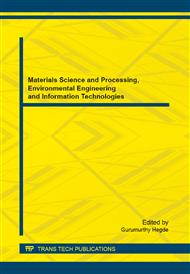p.543
p.547
p.551
p.555
p.559
p.563
p.567
p.571
p.575
Predicting Carcinogenicity of Anilines by Quantitative Structure-Toxicity Relationship
Abstract:
Carcinogenicity is an important toxicological endpoint which poses a great concern being the major determinants of cancers and tumours. Anilines possess such toxic properties as they can form various electrophilic intermediates and adducts with biological systems. In the present work, the molecular descriptors of anilines have been calculated with semi-empirical AM1 and E-dragon methods, and a quantitative structure–toxicity relationships (QSTR) model for carcinogenic potency (pTD50) model of anilines was developed with multiple linear regression (MLR) analysis. The validation results through the test set indicate that the proposed model is robust and satisfactory. The QSTR study suggests that the molecular structure and the electronegativity of chemicals are closely related to the Carcinogenicity.
Info:
Periodical:
Pages:
559-562
Citation:
Online since:
October 2014
Authors:
Price:
Сopyright:
© 2014 Trans Tech Publications Ltd. All Rights Reserved
Share:
Citation:


